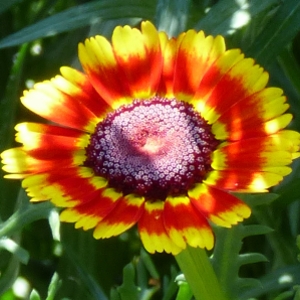

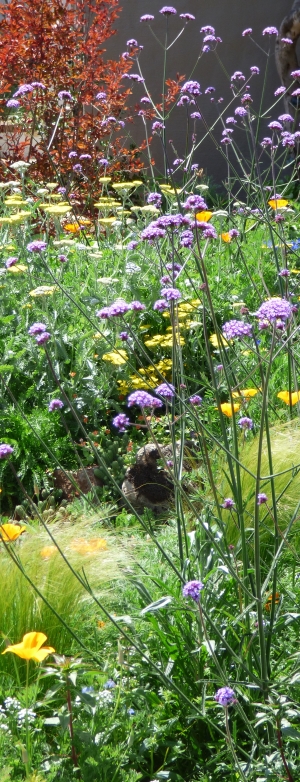
top
left: a common treat in wildflower mixes, Chrysanthemum
carinatum
.
top right: a splash of white Gaura linderheimeri brightens the classic color combination of purples, oranges and yellows in late Spring.
above: a collection of wildflowers seen through a mist of purple confetti, courtesy of Verbena bonariensis.
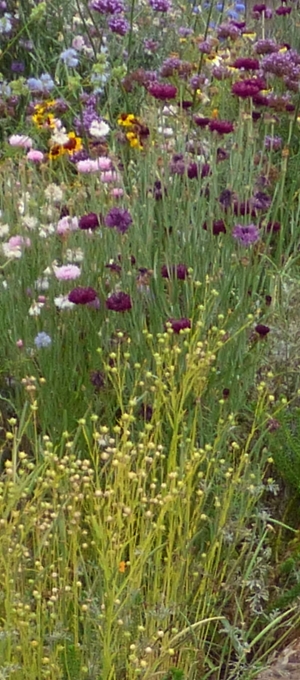
above: yellowing airy stalks of nub-tipped flax add a charming contrast to a collection of variously colored bachelor buttons, Centaurea cyanus.
home design installation consulting journal projects
Napa
overall idea for site: a slice of nature in front, urban farm
in back, with lots of color and plants that attracted pollinators in both areas. For now,
all photos are of the front yard, while work on the
back yard continues.
description of site: residential neighborhood in Napa with heavy clay soil, the east facing front yard consisted of a hill of large grade gravel, site belonged to client's grandmother.
pluses, solution to challenges: abundant sunshine, moisture retaining soil, and a blank slate made for an appealing project. We repurposed the gravel, and from the hill of dirt built several raised beds, amending them with Walt Whitman compost (from American Soil) and encircling them with stone, most of it local moss rock.
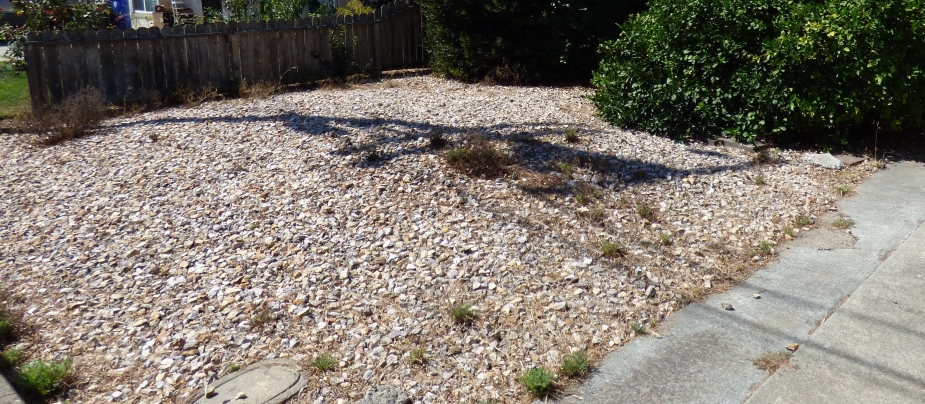
This is what we started with; what looks like a flat plane of granite stones was actually a small hill. Instead of disposing of the stones and soil, we decided to incorporate them into the design as paving for paths that would wind around the raised beds. We soon found layers of weed cloth inexplicably laid on top of solid black sheet plastic.
As the site is so far away, we worked three or four days a month. Luckily the client endured weeks of what could be generously described as 'early work in progress', but as soon as the rocks and plants began to make their way onto the property, momentum sped up.
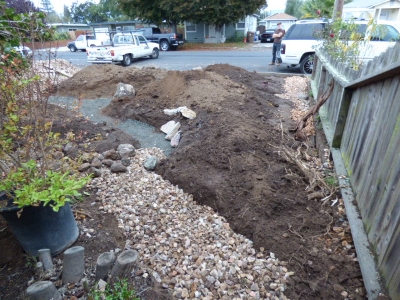
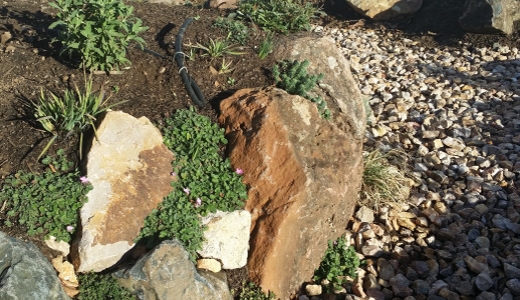
On the left is what it looked like in November, and on the right, the first area of stone wall. I like to plant at the same time as I build retaining walls, the tiny dots of pink are from an erodium species.
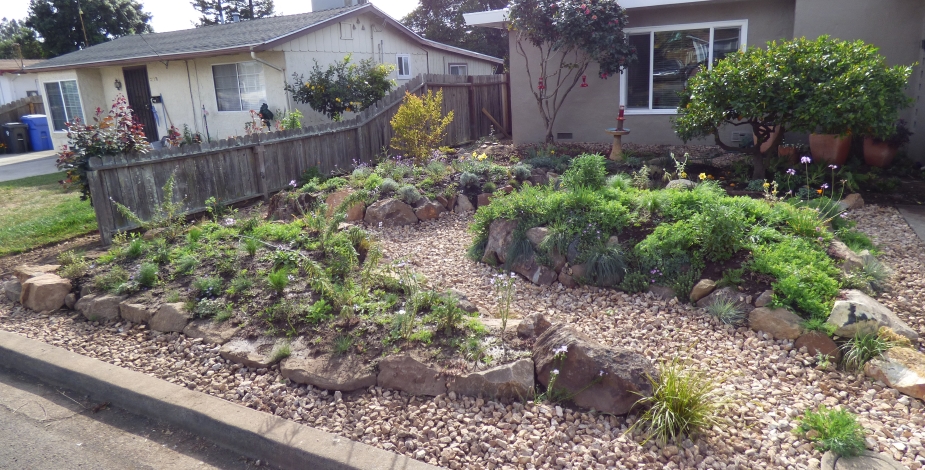
By March, rock surrounded all the raised beds, and bulbs and seedlings began to fill in among the growing perennial structure. Generally I placed cool colored foliage and flowers to be seen from the street, and brighter, warm toned flowers to be seen from indoors. Additionally the client spread various seed mixtures throughout the garden, and while that threw the color scheme out the whack for this year, it did yield some wonderful surprises.
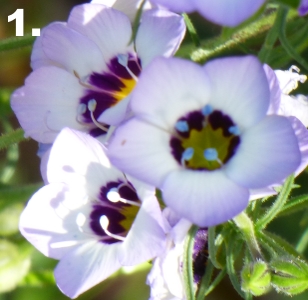
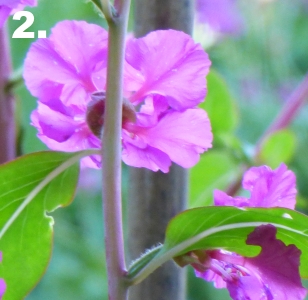
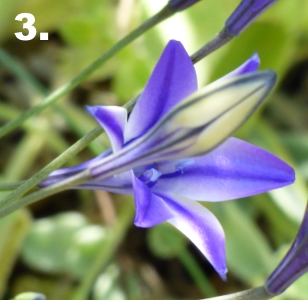
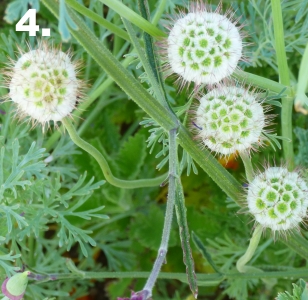
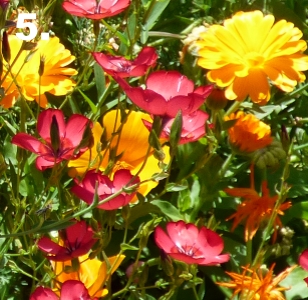
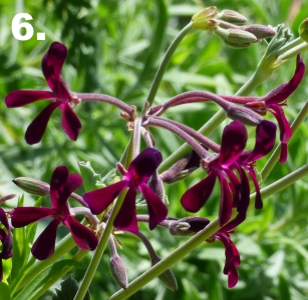
Above are a few of the stars of the Spring beds. 1. Gillia tricolor, part of a native wildflower seed mix that the client broadcast, was one of many welcomed surprises. 2. Clarkia unguiculata, started from seed as part of the indoor view's 'warm palette', is another native, as is. 3. Brodiaea laxa 'Queen Fabiola', planted on the street facing side of the raised beds as part of the 'cool palette'. 4. the minty spherical seedheads of this scabiosa provide interest after the pale lavender petals drop. 5. Linum grandiflorum rubrum mingling with orange poppies and calendula. 6. Pelargonium sidoides is the darkest of several pelargonium species used as a bridge between the cool and warm palettes.
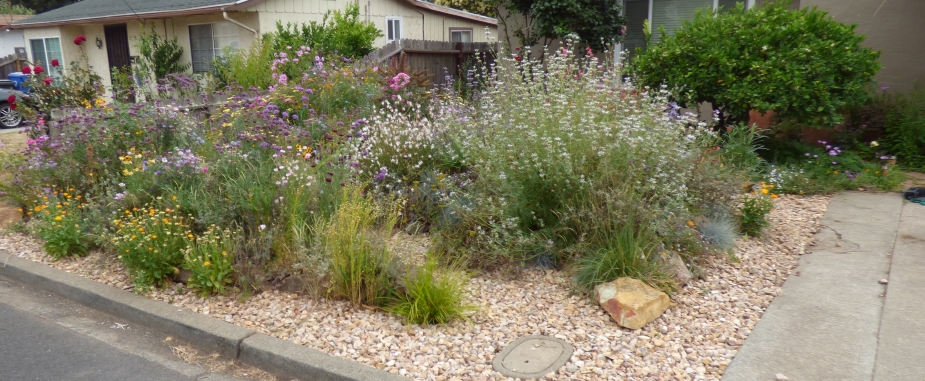
By July the California poppies have faded away and the next froth of blooms take center stage. From the left, pink clarkias, cosmos and achillea harmonize with the remaining purples and lavenders, set in relief by warm colored caledula, painted daisies and yellow achillea. Bachelor buttons, ranging in color from blushed white to deep maroon, either blend or contrast with the white guara spray behind them and the growing cloud of pastel salvia spires that dominates the yard. Nearly all the stone walls are invisible at this point.
In the coming seasons the profusion and confusion of annuals will give way to Fall flowers such as helianthus and aster, as well as buff colored plumes of various bunch grasses. As seed is collected and the least interesting debris removed, the perennial structure will return, anchored by the stone ringed raised beds. Decorative seedheads will be allowed to stay on until the big Spring pruning, and at that point, bulbs and seedlings will signal the next cycle of abundance.
Dean Ouellette 415-820-1623 garden_together@hotmail.com